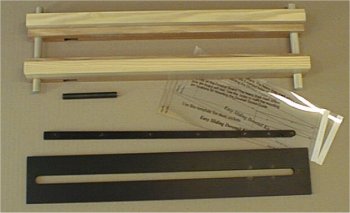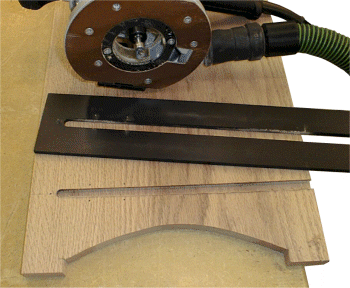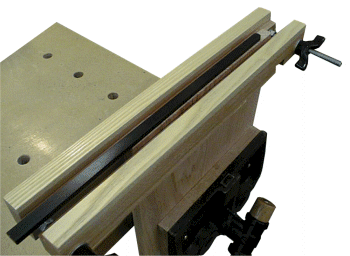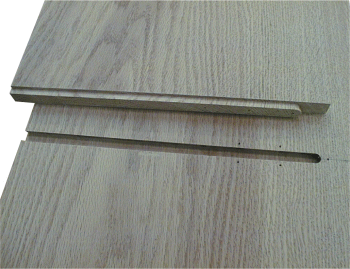|
|
|
| Description The Easy Sliding Dovetail jig is unique. While there are some jigs that allow one to make sliding dovetails, making a tapered dovetail is a completely different ballgame. The jig consists of three main elements, there is the slot jig, the tail jig, and a router stabilizer used with the tail jig. In addition to the instructions there are also two clear marking guides, a punch and router bit included. |
 |
| Tapered
Dovetail Before going much further, a brief explanation of what a tapered sliding dovetail joint is and why you would want to make one is in order. A sliding dovetail is a fairly easy joint to cut; if one is needed for a shelf for example both the mating pieces can be easily milled using a router table setup and any size or angle of dovetail cutter one desires. In the example shelf this type of joint is theoretically superior to a simple dado joint because it not only locates and supports the shelf vertically, it provides a lateral lock as well. In addition to that, it is often considered a more aesthetically pleasing joint if it is exposed. A tapered sliding dovetail is the same as
a non-tapered one except that one end of the joint is a little wider than the other. A
typical problem with non-tapered joints is that the longer they are, the greater the
likelihood of an interference fit situation developing. The is due to the increasing
friction of the joint as it is assembled and other effects as well. A tapered joint gets
around this problem by being "loose" until the very last inch or so of the joint
where it ALL comes into contact.
Summary
In the interest of full disclosure, Allen Designs LLC provided this product to facilitate this review. |
|
| Here is the slot jig after it has
been used on a small cabinet side, in this case for a shelf. In this particular
cabinet the jig was used to install one fixed shelf (shown), a drawer divider and the top,
all solid wood. This cabinet is pretty small so I'm using stock that is only about 5/8" thick to try and keep it's appearance more in scale. Note the five pin holes visible near the front of the joint. These come from the jig itself and are 0.75" edge to edge. Because I'm not using 3/4" stock here the ones on the top edge will show when the joint is assembled. If 3/4" stock were used, they would all disappear. |
 |
 |
This is a view of the tail jig installed on a board,
in this case the shelf that goes into the joint pictured above. The board is clamped in a vise and the jig is installed. Getting the jig in the exact middle and the proper distance from the edge is a little tricky, mainly due to the influence the end grain has on the pins. It is possible the jig can be installed with a small curve because of this too. The wooden parts on the outside of the stock are included and support the router when the cut is made. I've replaced the wooden dowels with 3/8-16 carriage bolts and plastic knobs to make clamping this jig to the stock a little easier. |
| This is a view of the completed
joint. If all has gone well the joint will go together pretty easily until the last
inch or so where it may (and should) require a little persuasion. Just as in all dovetail joinery, straight and square stock is very important in order to achieve success. |
 |